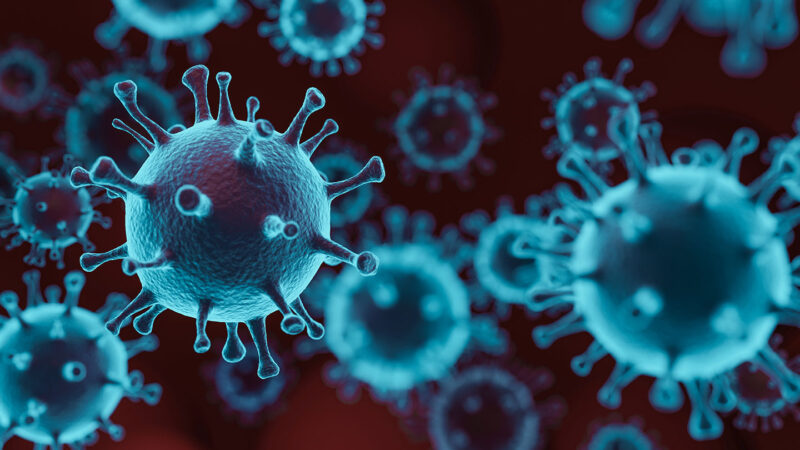Since the beginning of the COVID-19 epidemic, images of the coronavirus, SARS-CoV-2, have been engraved in our minds. However, the conventional image of the virus as a spherical object with spikes is not totally accurate. Coronavirus particles are ellipsoidal, with a variety of squashed and elongated morphologies, according to microscopy photographs of infected tissues.
A worldwide research team led by Queen’s University in Canada and the Okinawa Institute of Science and Technology (OIST) in Japan has now investigated how different elliptical shapes modify the way viral particles spin inside fluids, impacting how readily the virus may be transmitted.
The research was just published in the journal Physics of Fluids. “When coronavirus particles are breathed, they move around within the passages in the nose and lungs,” explained Professor Eliot Fried, head of OIST’s Mechanics and Materials Unit. “We’re interested in determining how mobile they are in these environments.”
The researchers created a model of rotational diffusivity, which governs the rate at which particles spin as they flow through fluid (in the case of the coronavirus, droplets of saliva). Smoother, more hydrodynamic particles encounter less drag resistance from the fluid and rotate faster. The rotational speed of coronavirus particles influences their ability to attach to and infect cells.
“If the particles rotate too quickly, they may not spend enough time interacting with the cell to infect it, and if they rotate too slowly, they may not be able to engage in the required way,” Prof. Fried explained.
Models of Coronavirus
In their research, the scientists used both prolate and oblate ellipsoids of revolution. Prolate shapes have one longer axis and oblate shapes have one shorter axis, as opposed to spheres, which have three equal length axes. Prolate forms expand into rod-like shapes when followed to their logical conclusion, whereas oblate shapes squash into coin-like shapes. Coronavirus particle differences, on the other hand, are more subtle.
The scientists made the model the most lifelike yet by attaching spike proteins to the surface of the ellipsoids.
Previous research from Queen’s University and OIST found that triangular-shaped spike proteins decrease the rotation of coronavirus particles, potentially increasing their ability to infect cells.
Also Read: SARS-CoV-2 antigen levels and clinical outcomes: Research
The scientists simplified their spike protein model by representing each spike protein with a single sphere on the surface of the ellipsoids.
“We then figured out the arrangement of the spikes on the surface of each ellipsoidal form by assuming they all have the same charge,” Dr Vikash Chaurasia, a postdoctoral researcher in the OIST Mechanics and Materials Unit, noted. “Identical charge spikes reject each other and prefer to remain as far apart as feasible.” As a result, they are equally distributed around the particle, minimising this repulsion.”
In their model, the researchers found that the more a particle differs from a spherical shape, the slower it rotates. This could imply that the particles are more capable of aligning and attaching to cells.
The model is still primitive, but it gets us one step closer to understanding the coronavirus’s transport properties and might help pinpoint one of the components necessary to its infective effectiveness, according to the researchers.
Follow Medically Speaking on Twitter Instagram Facebook





